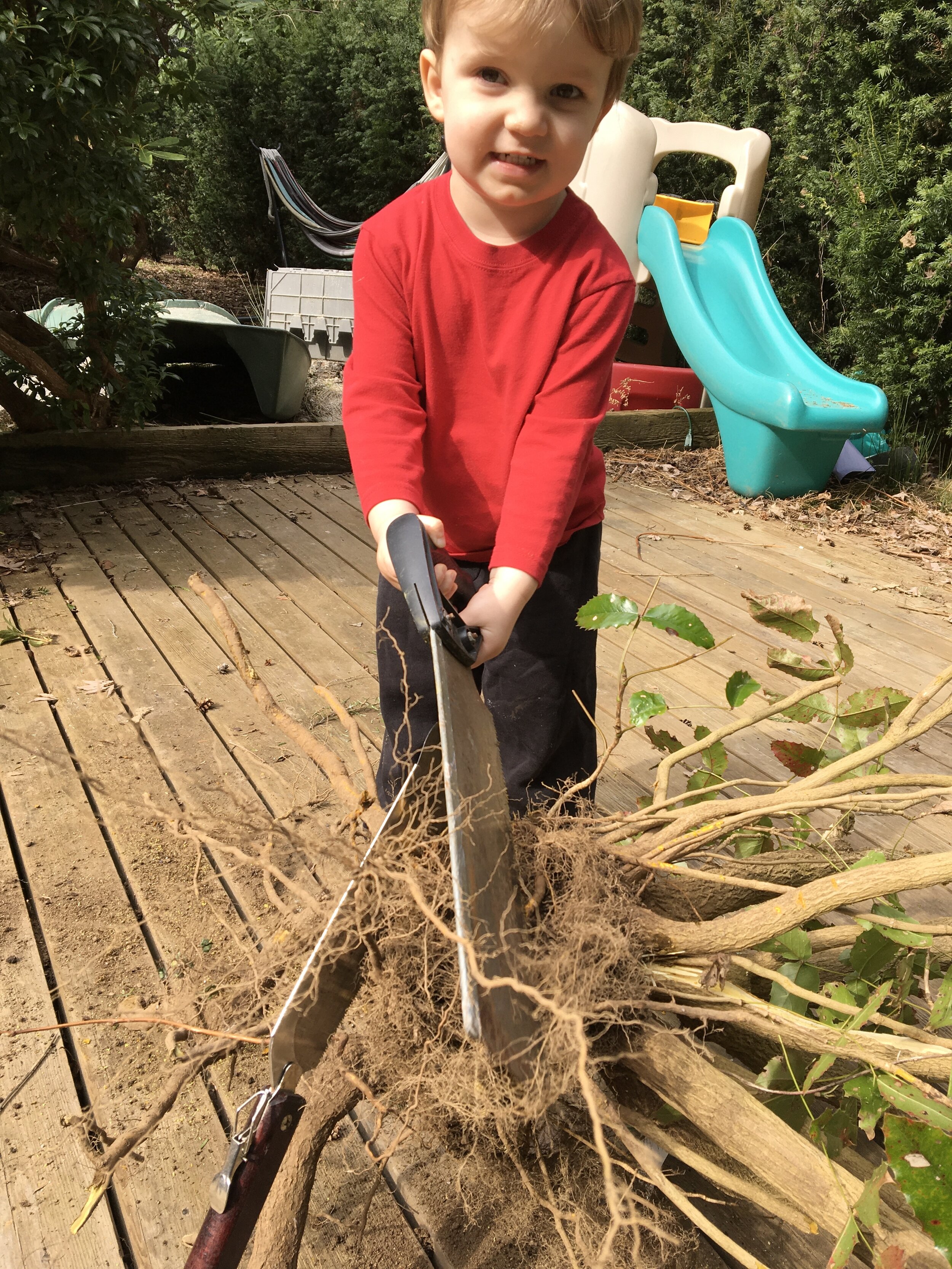Dull Oregon Grape I
Aka Mahonia nervosa or th'o:lth'iyulhp in upriver Hakkomelem, is a hardy shrub with a wide variety of uses. I wanted to explore the dye potential of the roots and stems.
For this entry, I was gifted three root bulbs from plants which were being removed from the Indigenous garden at the UBC botanical gardens. This was a rare opportunity to use a sufficient amount of shavings to try out some concentrated dye vats. I’d like to know the Halq'eméylem word for this plant as this is the language of the Musqueam Nation who both manage the gardens and gifted me the plants.
Three root balls
So this is what arrived on my porch - the root ball of three plants including the roots and about a foot or two of branches.
You saw it here
With the help of my friend here, we sawed away at the roots and several of the branches to try those out as well.
Branch vs. root
On the left you can see the cross section of a branch and the right is the root. The roots definitely appear to have more yellow dye1 in them. While the inner back of the roots has the deepest yellow colour, there is clear yellow all the way through the roots. The branches seem to have less, though the inner bark is almost as dark as the same layer in the roots.
Root pile
Once I had a small pile of fresh roots, I gave them a rinse to get the dirt off and then weighed them.
Peeler
After trying this step with a knife (much work and frustration), I took a page from Susan Pavel and Kelly Sullivan’s book and tried out a simple kitchen peeler. It worked so much better - it’s a far easier and fast approach to removing those layers of really concentrated colour.
Post shaving weigh
The easiest way to weigh the amount of shavings I made was to weigh the shaved roots and then I’d know the shavings would be the difference between this and the starting weigh (209.1g-143.7g = 65.4g).
Shavings!
Here is what 65.4 grams of shavings looks like. It had a real luminous yellow quality to it.
3 test skeins
The three skeins added up to 14 grams of wool (~250% WOF (weight of fiber)):
One skein had no mordant
One skein mordanted with alum
One skein mordanted with iron
The skeins were then pre-soaked in water and placed in a 1-gallon mesh paint bag available at most paint stores. This step keeps the fiber and dyeing material separate without having to worry about decanting or filtering the dye vat.
Get in the pot
The skeins in the mesh paint bag was then placed in the dye vat and I piled some shavings on top to help bury the fiber below the water level to try and expose all the fiber to the dye.
Shade of greenish yellow
The colours came out more a greenish yellow then the bright yellow I was expecting. The skein with no mordant came out the most yellow (the outer ring in this photo). The one mordanted with alum came out with slightly more greenish (middle ring) and finally the one mordanted with iron came out the most darkish tan/green/yellow.











